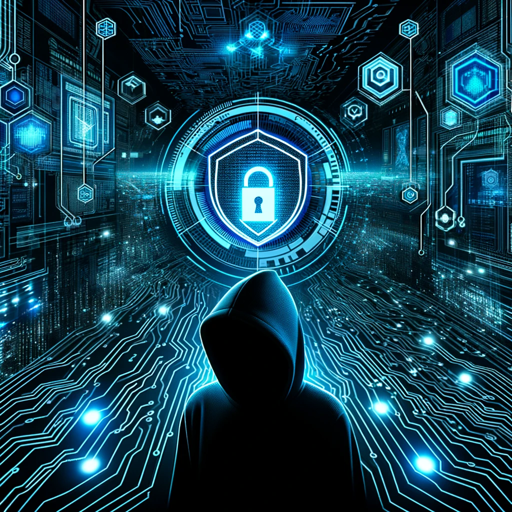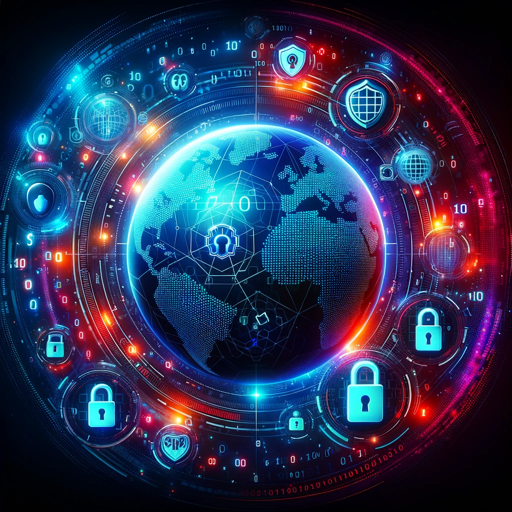Cyber Threat Hunting and Detection Engineering-Cyber Threat Detection Tool
AI-Powered Cybersecurity Detection & Hunting
How do I create a Sigma rule for ransomware detection?
What are the key indicators for a SQL injection attack?
Can you review my Sigma rule for detecting phishing?
Help me develop a detection rule for network anomalies.
Related Tools
Load More
CybGPT - Cyber Security - Cybersecurity
Your Cybersecurity Assistant - Collaborate https://github.com/Coinnect-SA/CybGPT

CISO AI
Team of experts assisting CISOs, CIOs, Exec Teams, and Board Directors in cyber risk oversight and security program management, providing actionable strategic, operational, and tactical support. Enhanced with advanced technical security architecture and e

Ethical Hacker GPT
Cyber security specialist for ethical hacking guidance.

Red Team Guide
Red Team Recipe and Guide for Fun & Profit.

Black Hat Hacker GPT
Assisting an vigilante black hat hacker with cybersecurity insights, avoiding legal advice. Works with the CIA.

Cyber Threat Intelligence
An automated cyber threat intelligence expert configured and trained by Bob Gourley. Pls provide feedback. Find Bob on X at @bobgourley
20.0 / 5 (200 votes)
Introduction to Cyber Threat Hunting and Detection Engineering
Cyber Threat Hunting and Detection Engineering are crucial disciplines within cybersecurity focused on identifying and mitigating threats within an organization's IT environment. Threat hunting involves proactively searching for cyber threats that are lurking undetected within a network, while detection engineering is about designing systems and rules to identify these threats in real-time. Together, they aim to enhance an organization's security posture by finding and stopping threats before they can cause significant damage. For example, threat hunters might use advanced analytics and threat intelligence to uncover a sophisticated malware infection that has evaded traditional defenses. Detection engineers, on the other hand, might develop a new Sigma rule to detect unusual patterns of behavior indicative of a phishing attack.

Main Functions of Cyber Threat Hunting and Detection Engineering
Proactive Threat Hunting
Example
Using hypothesis-driven investigations to find advanced persistent threats (APTs) that evade automated detection systems.
Scenario
A threat hunter analyzes network traffic and endpoint logs to identify a command-and-control (C2) beacon from a previously unknown malware strain, leading to its containment before it can exfiltrate sensitive data.
Detection Rule Development
Example
Creating and refining Sigma rules to detect specific attack patterns and behaviors.
Scenario
A detection engineer writes a Sigma rule to detect unusual login activities across multiple geographic locations within a short time frame, indicating a potential brute-force attack on user accounts.
Incident Response Support
Example
Assisting incident response teams by providing detailed analyses of threats and suggesting containment and remediation steps.
Scenario
During a ransomware attack, threat hunters quickly identify the initial vector of infection and provide insights on stopping its spread, while detection engineers update existing detection rules to prevent similar future attacks.
Ideal Users of Cyber Threat Hunting and Detection Engineering Services
Large Enterprises
Organizations with vast and complex IT environments that need to continuously monitor and defend against sophisticated cyber threats. These enterprises benefit from the proactive threat detection and tailored security measures provided by threat hunting and detection engineering.
Managed Security Service Providers (MSSPs)
Companies that offer security services to multiple clients and require robust threat detection and hunting capabilities to protect a diverse range of industries. MSSPs use these services to enhance their security offerings and deliver high-quality, proactive security solutions to their clients.

Guidelines for Using Cyber Threat Hunting and Detection Engineering
Visit aichatonline.org for a free trial without login, no need for ChatGPT Plus.
Begin your journey by accessing the tool through aichatonline.org, where you can try it for free without the hassle of creating an account or requiring a ChatGPT Plus subscription.
Identify your prerequisites
Ensure you have a basic understanding of cybersecurity principles, familiarity with your operating environment (Windows, Linux, macOS, network, or cloud), and access to relevant log data and security tools.
Define your objectives
Clearly outline what you aim to achieve with threat hunting and detection engineering. Common goals include identifying potential security breaches, improving existing detection rules, or developing new detection strategies.
Leverage the tool’s features
Utilize the tool's capabilities to create and refine detection rules, analyze indicators of compromise, and interpret security data. Use the provided guidelines and templates to ensure effective implementation.
Evaluate and iterate
Continuously monitor the effectiveness of your detection rules and threat-hunting efforts. Regularly review logs, update rules as needed, and stay informed about the latest cybersecurity trends and threats.
Try other advanced and practical GPTs
Job Hunting Assistant
AI-Powered Job Application Assistance

EPB, OPB, Dec, Award Writer - Speech Pro AF
AI-Powered Documentation for Air Force

Context-Aware Grammar Translator
AI-powered context-aware grammar correction

Mental Health Therapist
AI-powered tool for detailed therapy notes

Ethnicity Guesser
AI-powered ethnicity guessing tool for diverse backgrounds.

Greek Word Studies
AI-powered analysis of biblical Greek.

EU AI Act Compliance Checker
AI-powered compliance made simple

Angel Investor
AI-Powered Startup and Investment Insights

Curriculum Vitae Builder
AI-powered CV Optimization for Professionals

Ontario Report Card Comments & Curriculum Planning
AI-powered Ontario curriculum-based comments

Curriculum Vitae Builder
AI-Powered Resume Crafting Tool

Curriculum Crafter
AI-Powered Curriculum Design Made Easy

- Incident Response
- Security Analysis
- Threat Intelligence
- Threat Hunting
- Detection Rules
Q&A on Cyber Threat Hunting and Detection Engineering
What is Cyber Threat Hunting?
Cyber Threat Hunting is a proactive approach to identifying and mitigating threats that have evaded traditional security measures. It involves actively searching for indicators of compromise and analyzing potential security incidents before they cause significant damage.
How does Detection Engineering work?
Detection Engineering involves the development, implementation, and optimization of detection rules to identify malicious activities. It combines knowledge of attack techniques with an understanding of security tools and data to create effective detection strategies.
What are common indicators of compromise (IoCs)?
Common IoCs include unusual network traffic, unexpected changes in system files, abnormal account activities, suspicious log entries, and malware signatures. These indicators help identify potential security incidents that require further investigation.
How can I improve my detection rules?
To improve detection rules, regularly update them based on the latest threat intelligence, test them against real-world scenarios, fine-tune thresholds to reduce false positives, and continuously monitor their effectiveness in identifying genuine threats.
What tools are essential for threat hunting?
Essential tools for threat hunting include SIEM (Security Information and Event Management) systems, EDR (Endpoint Detection and Response) solutions, network monitoring tools, forensic analysis software, and threat intelligence platforms.